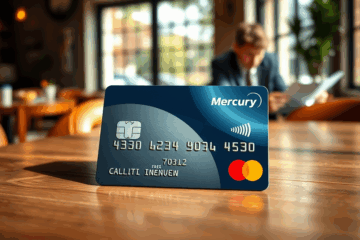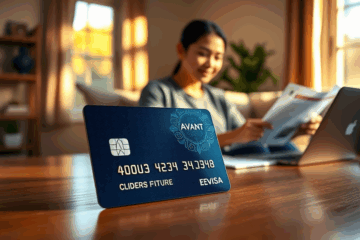Explore the Advantages of Contactless Payment Cards
Contactless Payment technology is revolutionizing the way we conduct transactions, making them faster and more convenient than ever before.
This article will explore the rise of contactless payment technology, how contactless cards operate, the security features that protect users, and the benefits of incorporating these cards into everyday financial practices.
Additionally, we will discuss their compatibility with popular mobile wallets such as Apple Pay and Google Pay, providing a comprehensive overview of this innovative payment method.
Understanding Chip Cards and Contactless Payments
Chip cards, especially those equipped with NFC technology, represent a significant leap forward in payment security and convenience.
Unlike magnetic-stripe cards, chip cards contain an embedded microchip that encrypts transaction data in a way that makes duplication almost impossible, enhancing security for users.
This shift is part of a global trend to phase out older magnetic-stripe cards, which are more susceptible to fraud.
Alongside security benefits, EMV chip technology introduces contactless communication, allowing users to complete transactions simply by tapping their card near a compatible card reader.
This method not only speeds up the payment process but also reduces wear on the card.
The transition to chip cards offers multiple improvements:
- Faster check-out
- Increased security measures
- Enhanced user convenience
These benefits, coupled with the compatibility of contactless cards with mobile wallets, provide a seamless and relevant experience for consumers, solidifying their place as the future of payment technology.
Internal Architecture and NFC Operation
The internal architecture of a contactless card is crucial for understanding how it interacts with near-field communication (NFC) technology to successfully execute transactions.
At its core, the chip card contains a secure microprocessor and memory that work together to authenticate the cardholder and generate dynamic transaction codes.
This seamless integration allows for swift communication with contactless-enabled terminals, ensuring secure and efficient payment processing.
Key Hardware Elements Inside the Card
The NFC antenna in contactless EMV chip cards captures radio frequencies, enabling devices to exchange data swiftly and securely when tapping on an NFC-enabled reader.
Working alongside it, the EMV chip processes payment data with a microprocessor that ensures each transaction generates a unique code, thus preventing counterfeiting.
Embedded within these elements, the embedded security features ensure that sensitive information remains protected through sophisticated encryption.
Moreover, the secure element acts as a tamper-resistant platform, safeguarding cryptographic keys and serving as an additional layer of protection within the card’s architecture, enhancing overall transaction security.
NFC Transaction Flow
The NFC transaction flow initiates when a user taps a contactless card against the terminal, triggering a dynamic data exchange.
The terminal sends a radio signal, powered by the electromagnetic field, to activate the NFC chip in the card.
Immediately, the card and terminal share a dynamic cryptogram, which acts as a temporary security code ensuring transaction security.
This cryptogram transforms with every transaction, minimizing replication risks.
As this exchange continues, the terminal verifies the card’s authenticity, culminating in swift authorization.
This seamless process underscores how NFC not only promotes efficiency but also fortifies transaction integrity, foreshadowing the importance of advanced security measures.
Security Layers Protecting Contactless Transactions
Contactless transactions benefit from a sophisticated security framework that integrates multiple layers of protection, ensuring both the speed and the safety of each transaction.
One of the cornerstones of this system is dynamic data authentication, which uniquely encrypts every transaction.
By using advanced cryptographic techniques, this process generates a one-time, non-reusable code for each transaction, significantly reducing the risk of fraud or data breach.
This makes it a critical security enhancement over magnetic-stripe cards, which utilize static data easily exploited by fraudsters.
Further safeguarding these transactions, tokenization replaces sensitive card details with a secure token that is useless if intercepted, preventing unauthorized access to the cardholder’s actual information.
Beyond this, encrypted communication ensures that data transmitted between the card and reader is shielded from hackers.
This multi-layered security architecture is continually reinforced through evolving standards like the EMV protocol, as noted by Thales Group Contactless Cards Security, ensuring robust defenses against emerging threats.
Everyday Benefits for Cardholders and Merchants
In the fast-paced world of retail, contactless EMV chip cards offer speed and convenience that transform the in-store payment experience, benefiting both consumers and merchants.
By simply tapping the card on a reader, transactions become quicker and more seamless, eliminating friction and enhancing the checkout process.
This Visa’s Contactless Payments system not only improves customer satisfaction with its ease but also helps businesses by reducing waiting lines and increasing throughput.
The efficiency gained through contactless payments allows more transactions to be processed in less time, ultimately boosting sales and customer loyalty.
These cards utilize enhanced security features that protect each transaction with a one-time code, providing relevant text security reassurances against fraud.
Furthermore, the contactless nature ensures better hygiene by reducing physical contact between the device and terminals, an essential attribute in today’s health-conscious society.
Real-world impacts in adopting such technology include:
- Reduced queuing time
- Lower risk of germ transmission
- Elevated customer trust
- Increased transactional efficiency
By integrating these cards into everyday transactions, the landscape of shopping becomes safer, faster, and notably more pleasant for everyone involved.
Interoperability with Mobile and Digital Wallets
Contactless chip cards and digital wallets like Apple Pay, Google Pay, and Samsung Pay coexist seamlessly through NFC technology.
These cards communicate with NFC-enabled smartphones, allowing them to transfer data securely when held near payment terminals.
The integration facilitates a smooth user experience where both physical cards and digital wallets operate interchangeably.
This flexibility is particularly important since it empowers users to choose the most convenient payment option according to their situation.
Payment terminals equipped with NFC tap-to-pay capabilities ensure that transactions occur swiftly without the hassle of swiping or inserting a card.
Interoperability advantages are at the core of this contactless payment evolution.
As dynamic security features and tokenization protect each transaction, users benefit from enhanced security whether using a physical card or mobile wallet.
Relevant text such as the Apple Pay, Google Pay, and Samsung Pay platforms exemplify how widely these technologies are embraced across mobile devices, offering consumers and merchants alike unparalleled flexibility and efficiency in managing transactions.
As more retail environments upgrade their transaction systems to support NFC, the coexistence of contactless chip cards and digital wallets continues to revolutionize the way people make payments.
Contactless Payment cards offer a seamless and secure way to manage transactions, enhancing the shopping experience.
As technology continues to evolve, these cards will play an increasingly vital role in our everyday financial interactions.



0 Comments